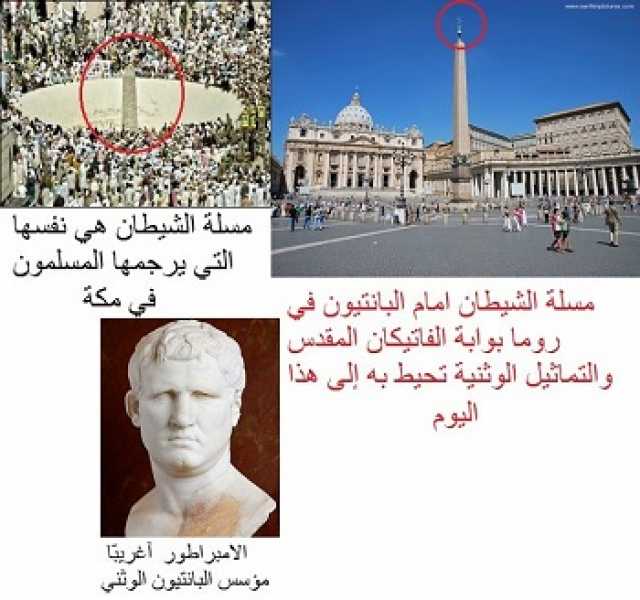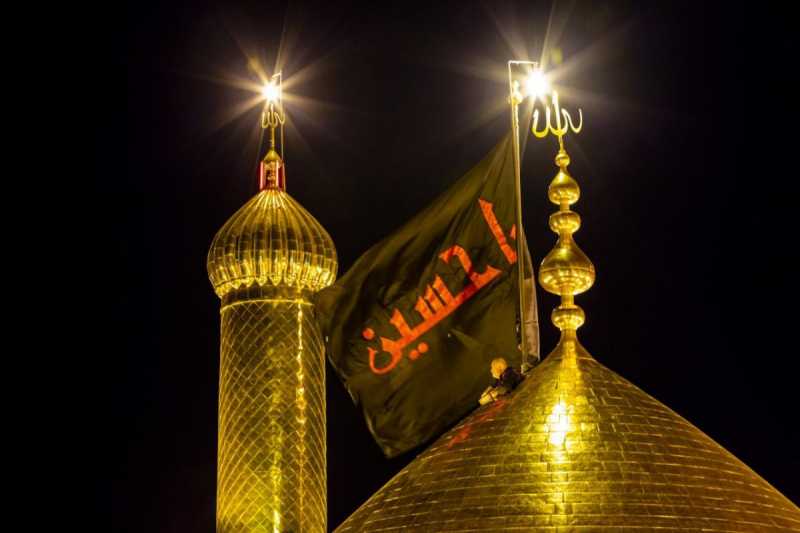What You Are Uninformed About the Vatican
Christianity & Syncretism
مالا تعرفه عن الفاتيكان ! المسيحية والتوفيقية.
Written by: Izapilla Penijamin
Translated by: Ni'ma Sharaf
Some readers asked me to write a review on the new Pope, but I'd
rather write about this eerie religious institution, known to
everyone by its contemporary name 'the Vatican' without knowing
about its origin and evolution.
Hereunder, I will reveal secrets about this institution which are
not easily accessible; secrets kept within the bounds of the
power elite, while screened from the vast majority of people.
The construction of the Pantheon Temple predates Jesus birth,
firstly built by the Statesman and architecture Agrippa in Rome,
Italy, year 27 BC during the reign of Augustine, then followed by
a later construction in 126 AD by emperor Hadrian. The Pantheon
is one of the Pagan monuments that still preserves its original
shape, and it represents the historical facade of the present-day
Vatican, and features a huge dome with a diameter of 43 meters,
one of the most distinguishing sites of this pagan edifice.
During the two stages of construction, both Agrippa and Hadrian
collected all the statues of pagan deities and placed them in the
Pantheon, so the spot was predominantly Pagan. Afterwards,
Hadrian installed the Satanic obelisk, the very obelisk currently
standing in the middle of the Vatican courtyard, keeping its
original form, but with the cross positioned at the summit to
change it outwardly from a Satanic monument into a Christian
emblem where liturgies are still running. It has become a worship
sanctuary, from where the Pope does his prayer on his terrace
before the masses every Sunday pointing to the obelisk and the
cross as part of the prayer gestures.
In 609 AD Pope Bonifas re-inaugurated the Pantheon after
renovation, then he pronounced it an official church for the
generality of Christians while keeping safe all the statues,
pagan idols, Satanic monuments in their positions. Their names
alone were changed into the names of the 'saints', and the
Pantheon was renamed initially by Pope Bonifas as: 'Church Santa
Maria Rotonda'. The old Italian periodical La Civiltà Cattolica
stated in this respect: 'what Pope Bonifas intended to use the
temple for specifically was to glorify all the martyrs of the
Christian domain or all saints of Christianity on a wider scale,
but first and foremost the mother of God: The Virgin', whereby
these saints denote all the pagan statues of the Pantheon that
Emperor Hadrian conserved apace with the cross of Jesus to
attract the Pagans to the new religion.
Presently, the Roman Catholic Church has given the Pantheon two
names: 'Santa Maria ad Martyrs' and 'Church Santa Maria Rotonda'
to signify for the Satanic monument perching at the interior of
the Vatican on the public sacred courtyard.
The Vatican & Syncretism
The church remained overburdened by the presence of statues and
monuments. It was not possible to dispose of them because a big
proportion of Rome pagan community and bordering regions were
coming to worship these idols and give offerings to Satan's
monument. Consequently, Pope Bonifas started some initiative
implementing new rules which have dramatically changed the whole
condition of Christianity and had sinister repercussions on it.
He endorsed the older rules instituted by the former Pope, St.
Gregory the Great, known as Pope Gregory (I) who innovated the
principle of Syncretism as a scheme to attract the Pagans, but in
the aftermath Paganism got stuck in the throat of Christianity
until it became its voice and means of expression, and the
contours of Christianity were permanently delineated as pagan.
Pope Gregory (I) adjusted the pagan temples to make them
available for use by Christians. He issued a sacred papal decree
as an unalterable instruction stating: the temples of the deities
should not be knocked down; if they were in good condition, they
must be transformed from the worship of Satan to the service of
the true God.
The rationale of Gregory (I) subsumes that if the Pagan nations
see their temple safe and surviving, they may be more inclined to
drop around hence they might be acquainted with the Messiah. In
reality, the pagan nations continued on offering sacrifices and
slaughterings to Satan's monument where the Pope is doing his
prayer and delivering his speeches.
Afterwards this practice has become canonical in Christianity,
whereby the Popes tend to erect churches over pagan temples in
Africa, India and everywhere without removing the existing idols
and statues.
Henceforth, in virtue of another Papal decree, the entire ancient
festive days of the Pagans were tailored to fit into Christianity
and enveloped with Christian titles. The Italian periodical
Cattolica justifies this saying: 'having some customs and
liturgies of the foregoing Christians with strong affinity to the
practices and life-styles of the Pagans is axiomatic and a fact
known to all today's scholars. They are strongly embedded and
interrelated with the public and private life of the ancient
world. Nonetheless, the Mother Church did not find it necessary
to uproot them, and had them remodelled in a Christian mould to
raise them aloft, all for the purpose of softening the Pagans'
hearts towards Christianity and avoid rioting.'
Best example is Jesus birthday; originally it was the birth of
the Sun god which is unconquerable and henceforward transformed
into the birth of Jesus, the unconquerable. In other words, the
same festive day of the Pagans, originally called 'Dies Natalis
Solis Invict', the birth of the unconquered sun, during which
they plunge into beastly pleasures and dissipation, is made a
religious day commemorating Jesus birth.
The Popes obviously did not do justice to Christianity when they
took the Pantheon to be their Mother Church and integrated the
pagan beliefs into religion, justifying this as to pierce the
hearts of the Pagan public and to preserve practices cherished by
them. The offspring was a hybrid church of Vatican Rome, apostate
and estranged from the pristine teachings of Jesus.
This is the head office of Papacy, the most sacred place for
Christians on earth, whereby the Pope sits on 'Zeus' throne
holding in his hand the pagan curved crook (crosier) and posing
amid the pagan idols and the obelisk of Satan with Jesus cross to
be nominated as the spiritual father for the generality of
Christians across the globe, overlooking the major commandment
sent down by God on his prophet and the covenant he made with
them:
“Beware not to fail to recall My covenant .... (1)You shall not
make idols to yourselves; and you shall not set up for yourselves
graven images, or a memorial pillar. And you shall not place any
stone image in your land, to bow yourselves to it; for I am
YAHWEH your Elohim.” (Leviticus, 26:1)



